Thanxs for the post, Heinrich.This is fine-tuning indeed, Peter. But this attention to detail is what will pay handsome dividends later on.
But with a CAD design, translated to the laser, you can expect equal distances?
regards, Peter
Thanxs for the post, Heinrich.This is fine-tuning indeed, Peter. But this attention to detail is what will pay handsome dividends later on.

...a false statement, IMHO. A perfect builder makes a perfect build log, doesn't necessarily have to be bored. Why would we strive for perfection, then? Let's use old school tools, methods\technology to make things interestingShow me a perfect builder and I will show you a boring build!

I have no contradictions@Jimsky You contradict yourself. You just said yourself what fun the mallet/hammer was. THAT was certainly not boring, because you were building/creating.constructing. If you have a perfect kit, you would not be a model BUILDER, you would simply ASSEMBLE the pieces. Come on ...
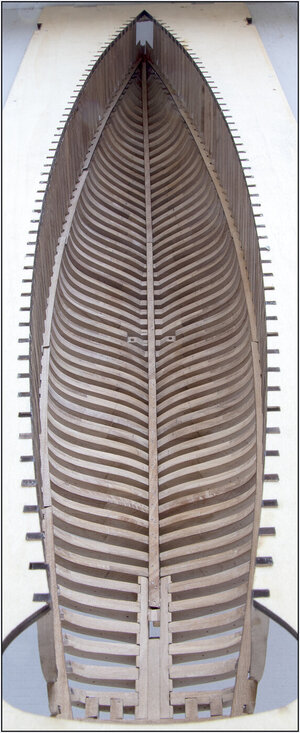

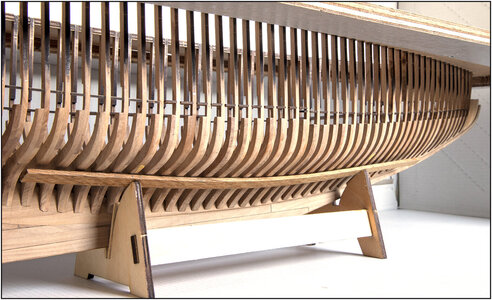

Thanxs / dankjewel Henk.Goed bezig geweest vandaag,
Zie er goed uit
Hi Dean,The waterway boards will always require adjustments. I spent a lot of time with a file and test fitting them to get it correct. But that was making the width in the slot correct, and also the width between slots equal.
My approach was to ensure that the frames aligned with the waterway boards, and if I had to, I pulled the frames into the slots at assembly to correct any distance between frames that wasn’t correct.
If you adjust the slot to the frame, then you are not accomplishing anything other than making the waterway board fit. So I used the waterway board to adjust any incorrect distance between frames.
Good job todayGoed bezig geweest vandaag,
Zie er goed uit
With this line about part 28, it meant that the frames on that part were also nicely straight between the jig and the keel. With the correct space between all of them.One of the parts #28 was perfect aligned and it slides direct to its place.
Thanxs Eugene,Good job today
look good
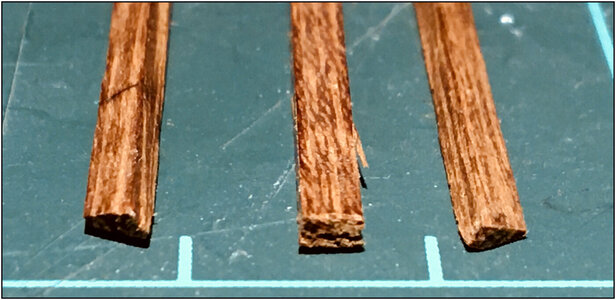
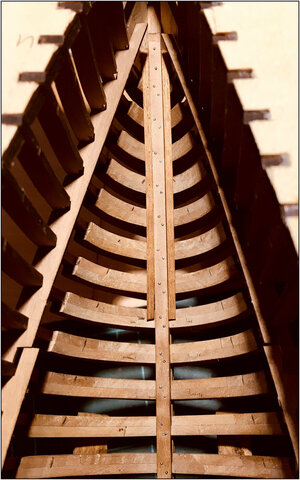
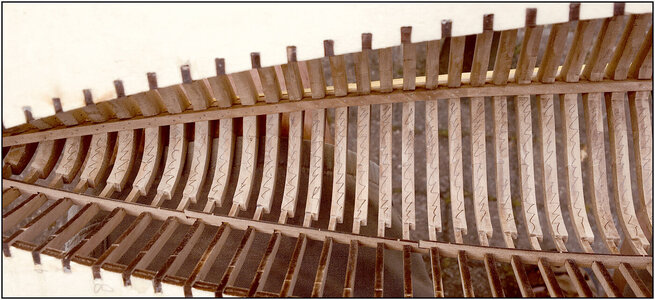
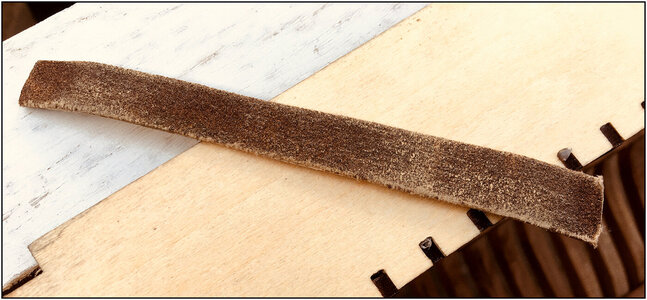
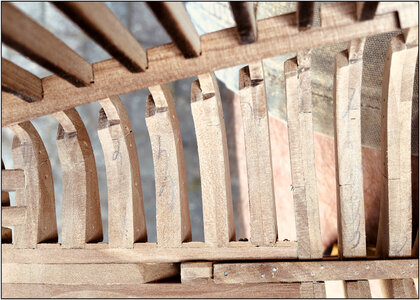
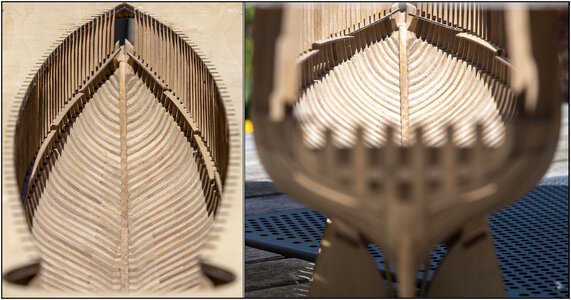
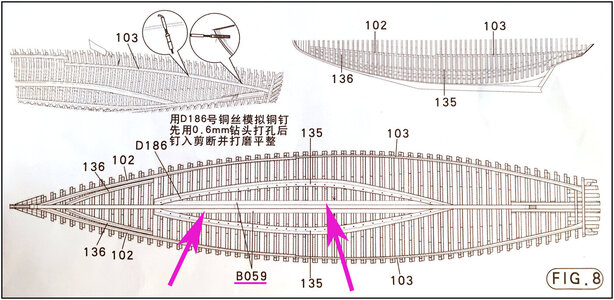
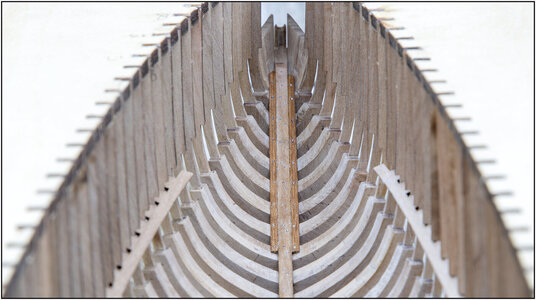
Thanxs Heinrich,Amazing work Peter. The attention to detail is meticulous to say the least. The frames contrast very nicely with the sisters keelson.
I am tempted to build another Bluenose from plans, and add the complete ship below the deck. I would then feel obligated to do a cutaway on one side (removing the frames) to display that detail. It would make for a lengthy project. Maybe when I retire!Started sanding the inside. First the frames accentuated with a pencil:
View attachment 238061
On a strip of thin plywood glued a piece of sandpaper.
View attachment 238062
That is pliable and the ends slightly bent. So you can follow the inner curve without the ends always bumping against the frames.
Now a matter of sanding back and forth across the width of several rafters until all the pencil marks are gone.
Here I am almost there:
View attachment 238063
Flatten out a few more parts.
A few hours later I was fine. In the garden, when partial “The Sun was Eclipsed by the Moon”some pictures were taken. That is still hard light, but it works well for the contrast between the frames.
Also play with the sharpness/depth a bit:
View attachment 238064
Thanks to the spacers, the frames are locked in so they do not bend back and forth during the sanding.
The inside is now ready to install the necessary beams.
As mentioned, the sisters keelson are not listed in this way in the YQ manual.
There, 2 strips, which are also used as hull planks, are placed in the middle against the keelson:
View attachment 238065
But according to the previously mentioned Saga, the sisters keelson runs along the entire length of the keelson.
Installed the first 2 pieces in the bow. Gluing, fixing, drilling, nailing:
View attachment 238066
For this picture, I took away the 2 spacers in the front.
Perhaps they have used the same wood by the original BN. Depending on the incidence of light, they now accentuate the longitudinal direction slightly more. That is a nice counterpart for all the transverse frames.
Up to the stern.
Regards, Peter
